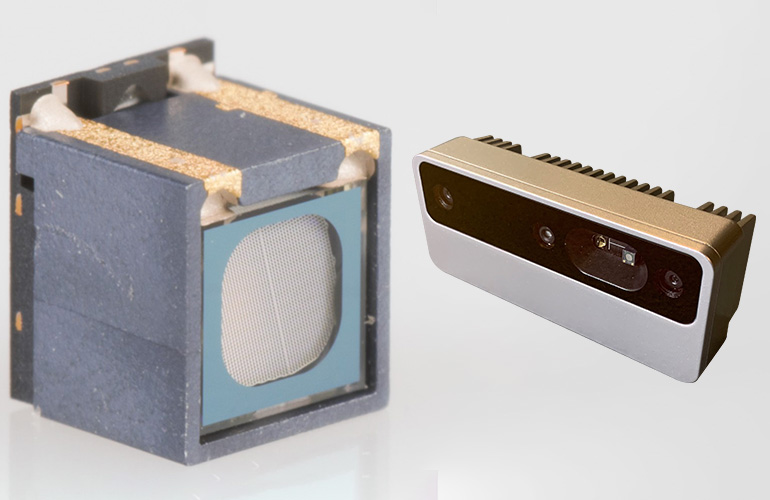|
Listen to this article  |

ams OSRAM’s Belago 1.1 Dot Projector (left) and Luxonis’ OAK-D Pro spatial AI camera. | Source: ams OSRAM/Luxonis
ams OSRAM announced Luxonis will use OSRAM’s Belago 1.1 Dot Projector in its 3D vision solutions for automatic guided vehicles (AGVs), robots, drones and more.
3D vision solutions require infrared light sources, which is what OSRAM’s projector provides. The Belago 1.1 Dot Projector combines an infrared vertical cavity surface emitting laser (VCSEL) with advanced optics. OSRAM created the projector to be best suited for Active Stereo Vision (ASV).
“The Belago 1.1 provides very stable, focus-free dot projection for increased texture on the scene and ASV depth performance,” Joerg Wertli, senior marketing manager at ams OSRAM, said. “Applied in Luxonis’ latest ASV camera, customers have access to a turnkey 3D solution for quick adoption in a wide range of applications.”
ASV works by comparing the images of a pattern Belago 1.1 projects on a field-of-view. Two infrared cameras capture the image, depth of field is calculated and a 3D map is created. The Belago 1.1 will be used in Luxonis’ OAK-D Pro spatial AI camera.
“Active Stereo is incredibly powerful and useful in robotics – but it was a missing piece in the OAK ecosystem until now – primarily because we wanted a solution with rock-solid eye safety,” Brandon Gilles, CEO at Luxonis, said. “Given the open nature of our ecosystem, it was pivotal that we be eye safe. We were ecstatic when we found Belago 1.1 because its architecture allows simple and robust eye-safety, which enables Luxonis and our customers to autonomously integrate active stereo depth safely and confidently, unlocking untold applicability.”
Luxonis was founded in 2018 and offers a spatial AI and CV platform that focuses on embedded machine learning and computer vision technology. The company raised $2 million in seed funding in July 2021.
ams OSRAM has over 110 years of experience in light and sensing. The company brought in over $2 billion in sales in 2019.
Credit: Source link


Comments are closed.